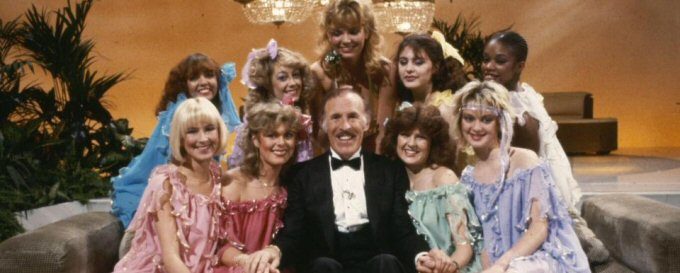I’m 48 years old. Thats old for an indie game dev. However, its also an age where I find myself looking at the world and going ARGGHHHH. Not just in a ‘things are bad’ sense, which I think a lot of younger people would assume, but in other ways. For the record, ‘things are bad’ is always how people feel who look at the wider world, especially if you are political, or read the economist (or worse still…the ecologist). People often forget about things that have got better, and immediately discount them. Here, for balance is some of the stuff that has ‘got better’ since I was a child…
I live in a hugely less racist society than when I was young. Most of the words used to refer to non white kids at school, I cannot even bring myself to type here as examples. We had a single prominent black TV presenter (Trevor McDonald) and eventually a female black newsreader, and then a single black comedian (Lenny Henry). These were watershed moments. Racist humour was a regular prime-time TV event, thanks to ‘comedians’ like Jim Davidson, Jim Bowen and Bernard Manning. There were racist TV comedies about foreign people learning english, or being (OMG) your neighbour.
I live in a hugely less sexist society than when I was young. TV music shows had sexy dancers dancing to the music, game shows always had silent but pretty female assistants to do menial work for the main host (always a man), workplace inequality was huge, and men doing housework or cooking at home was mocked. Sexist humour was everywhere. The pay gap was way worse. We had typing pools (all women) and all nurses had to be women.

I live in a society which has much more opportunity for entrepreneurship than when I was young. There was no concept that you could start a business and build it up and make money, at least not without help from your rich relatives who would first give you a job in ‘the family business’. When I was young, working class people going to university was extremely rare, and class-snobbishness was rife. Yes its bad now, it was worse then. I’m a working class kid ‘done-good’ living in a relatively wealthy rural community, and nobody gives that a second thought now. They would have done so back then… As a kid, the TV example of a small businessman was considered a joke (del trotter), now we have dragons den, which has actually spun out some very successful businesses. Owning shares and investing is easy now. When I was a kid…nope.
Technologically, life is absolutely incredible compared to my youth. We had a sony walkman (if you were lucky) which you could listen to your poor quality cassettes on, and that was it for personal entertainment. TV had just 3 channels, and it was not broadcast between around midnight and 9AM. Obviously TVs had small screens and weighed about a ton, plus we had no remote control. My grandfather had a black and white TV right up till his death. We had no washing machine, certainly no dishwasher, and no microwave. Coffee was instant coffee, there was no other option. Obviously there was no internet. We had libraries instead. I can see more amazing tech from my keyboard sat here than I thought even the super-rich would ever enjoy in my lifetime, and its all pretty cheap.
I grew up assuming there would be nuclear war before I reached this age. It was pretty much a given that the USSR and the US would nuke each other, and that living in London I’d be vaporised along with everyone I knew. This was a popular TV drama at the time, and its terrifying. This wasn’t fear of a short exchange of nukes between US and N Korea, this was an assumption of Armageddon. I had regular nightmares about it.

So things are pretty awesome right? And certainly things have worked out well for me, with my own business, some stuff in my past I’m very proud of (the African school and war child being the most obvious examples), so why am I worried about the world?
CHANGE.
Its common that people accept the findings of studies that show that younger people are more accepting of change, and that people become more conservative as they age. Its another thing entirely to experience it. Frankly if I could press a button that froze the world in 2017 right now, I’d be tempted to hit it, even though I know we have problems and a lot needs fixing. Why? what on earth am I so worried about. Heres the less good-news list :D
Climate Change. This is the big one. Unless we do some pretty drastic stuff, we as a society are fucked. People just glaze over when you look at the evidence, and dont want to hear the reality. Ignore the temperature change and the sea level rise, they never seem *that bad* to us intuitively (whats a few inches of water and a few degrees right?), think through the deeper implications. Much lower crop yields and more extreme weather leading to food shortages and massive food price spikes. Mass emigration (and thus immigration) as land becomes useless for agriculture. Think about all of the cultural, religious and ethnic tension you get when a few tens of millions of desperate people try to walk into their neighbouring countries. I would be amazed if we dont see border disputes with countries gunning down migrants at the border in the next 10 years. Am I’m talking Europe, not Africa.
Inequality. Jeff Bezos is worth 100 billion, and wants to build a space business. Thats great jeff, but how about paying your fucking workers decent salaries and letting them take breaks first before you play around with rockets? The sheer lack of empathy at the top of many silicon valley firms baffles me. Again, in the next ten years I think we will see this spill over into violence. You can only kick the poorest in society so many times before they tear your leg off and beat you with it. The recent tax changes in the US point to this amazingly getting far WORSE not better.

Technological change. Stuff is going to change REAL FAST. In fact it already is. Robots, self-driving cars, AI…we are looking at a sudden massive upswing in technology that wwill change everything, put tens or hundreds of millions of people out of work and nobody is prepared for it. This is scary. I like the benefits of the new tech (amazing electric cars, fast computers, VR), but oh my god its going to transform society like crazy, and our elderly and tech-illiterate politicians are too busy with Brexit to even notice.
Political Partisanship. With the rise of social media and more of our lives spent online, everyone lives in their carefully curated echo chambers and polite debate with people who have different views is now rare. Cross-party co-operation is now zero, leading to stagnation or regular wild swings to left and right which benefit nobody. Politicians are either saints or sinners, depending which team you are on, and this is getting worse and worse. The next elections will be won by the best media teams, the actual candidates and policies are now irrelevant. This is a disaster.
So yeah, I feel conservative, and scared. I try not to be, but holy crap, there is a lot going on in the world right now. I feel I could spend my whole life sat reading the news, biting my nails and getting miserable. Apparently its called middle age. Probably all of the problems IO list above can be fixed if everyone buys Shadowhand on the 7th December on steam :D